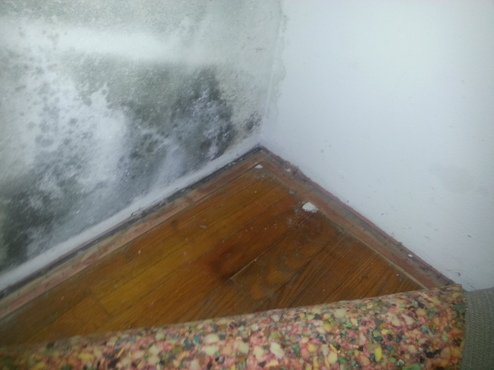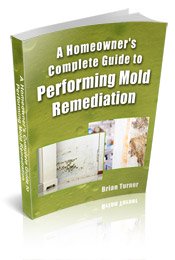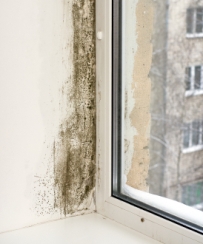Find a Mold Specialist Now
Click or Call, Toll-Free 24/7
Black Mold in Houses
Black mold in houses can lead to all sorts of health problems and medical disorders. Unfortunately, household black mold is not uncommon these days. Black mold is unsightly, of course, and it also has a characteristic musty odor that is unpleasant. The greatest concern about black mold in the home, however, is the serious health problems it can sometimes cause. We’ve written about the health problems sometimes attributed to black mold previously, but now we’d like to talk about how to look for black mold and what to do if you find some.
Where You’ll Find Household Black Mold
Black mold can grow anywhere in the home that is warm and damp. Common locations include bathrooms, basements, attics, under sinks (especially if you’ve had a leaky pipe under there), on ceilings, underneath carpet, underneath wallpaper, around windows that are not tightly fitted, inside walls and inside HVAC ducts. Mold can also grow on or in upholstered furniture and mattresses, in boxes or piles of paper, in books and on kitty litter boxes. Unfortunately, if you find household black mold in one location, there is a good possibility there is more elsewhere in the home.
How to Find Black Mold in Houses
Sometimes black mold is clearly visible. You may have slimy black mold all over a bathroom wall or all along some support beams in your attic. Sometimes, though, you might have mold growing in places where it cannot easily be seen, like underneath or behind appliances, underneath wallpaper or inside walls. Inspect all likely locations carefully, using a flashlight if it’s dark like it is inside vents or in some attics so you can see clearly. If you notice a musty smell in an area, inspect even more carefully because there is almost certainly mold somewhere.
In addition to simply looking for mold, you can purchase test kits to test for household black mold on surfaces and in the air. You can also hire a professional to test your home for mold and help you locate all the black mold you’re dealing with. Follow this link if you want to learn more about Black Mold Testing.
Black mold is not the only type of mold sometimes found in houses. All types of mold growing indoors can cause some health problems, though, especially respiratory problems and allergic reactions. There are tests that can tell you what type or types of mold you’re dealing with, but regardless, you need to get rid of it as soon as you can.
Removing Household Black Mold
It’s important to remove all black mold from the home in order to prevent health problems from occurring or worsening. Make sure to educate yourself about how to remove mold safely if you plan to do the job yourself. Some people prefer to hire a professional to make sure the job is done right.
To do the job yourself, you’ll need to purchase a biocide designed to kill black mold. Don’t try to clean up household mold with bleach or basic household cleaners.
Preventing a Recurrence of Black Mold in Houses
Black mold only grows in areas with excessive moisture. To prevent a recurrence of black mold in houses, all sources of excess moisture must be identified and eliminated. Check for leaks around toilets, under sinks, around all windows and in the roof. Use the exhaust fan in the bathroom when showering, or open a window for a little while after showering, or both. Install dehumidifiers in rooms that continue to feel damp for any reason. You can get a whole house dehumidifier if you have dampness in several rooms. For best results, keep the humidity in your home at 50 percent or less.
Recommendations
We recommend calling in a professional to inspect your home for mold if you suspect a black mold problem. A professional mold inspector can tell you whether or not you’re dealing with black mold and can identify all areas in the home where mold is growing. For a list of professional mold inspectors in your area, just follow this link.
If you have a black mold problem in your home, we recommend scheduling a free consultation with a mold removal specialist. A mold removal specialist knows how to remove black mold safely, even mold growing in hard-to-reach places like inside walls and inside heating and air conditioning ducts. He or she will also have all the necessary equipment for the job. Even if you plan to remove the mold yourself, a specialist can advise you about the best way to do the job. For a list of mold removal specialists offering free consultations in your area, just follow this link.
Return From Black Mold In Houses To Our Black Mold Detection Page
Black Mold Health Symptoms Home Page







